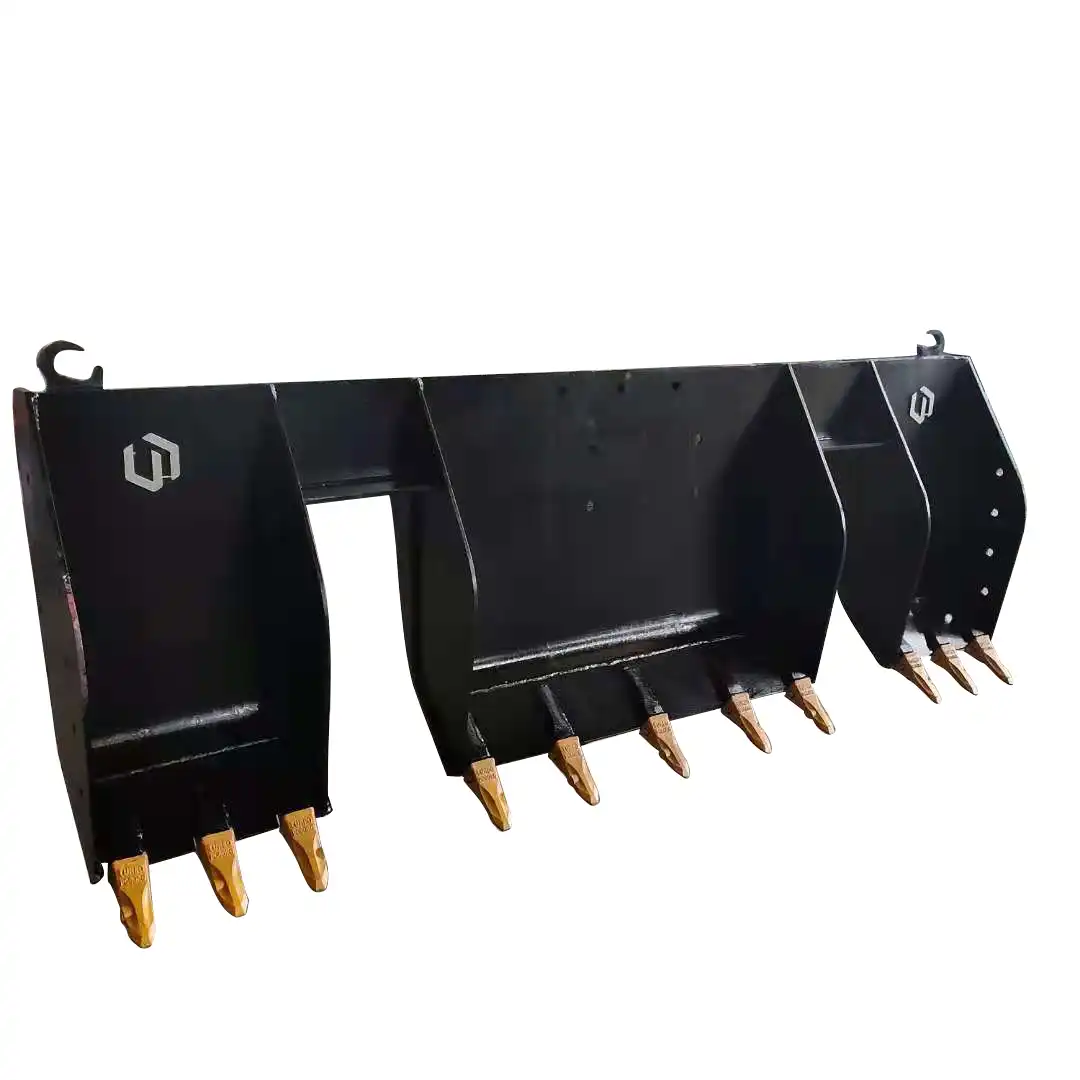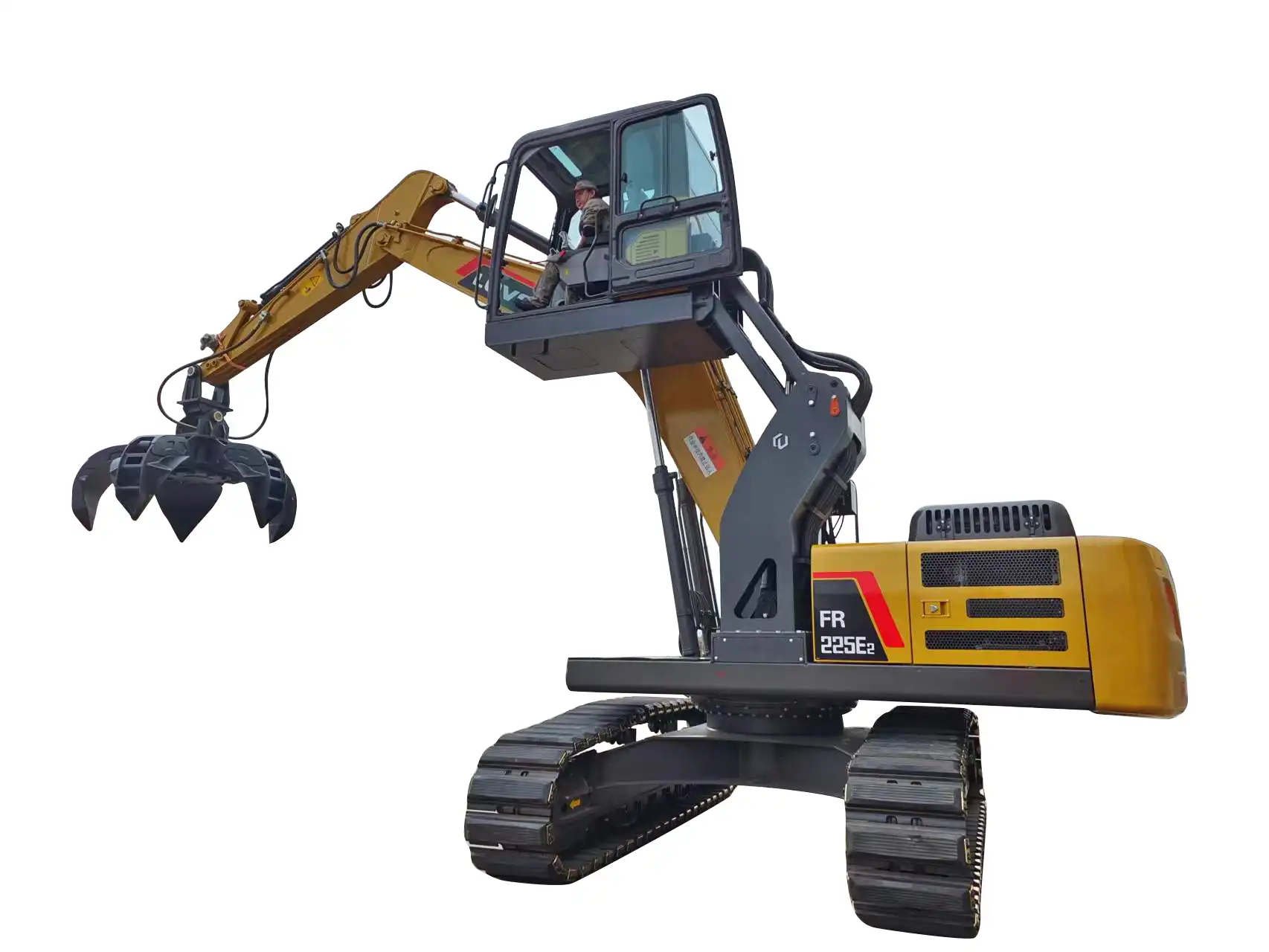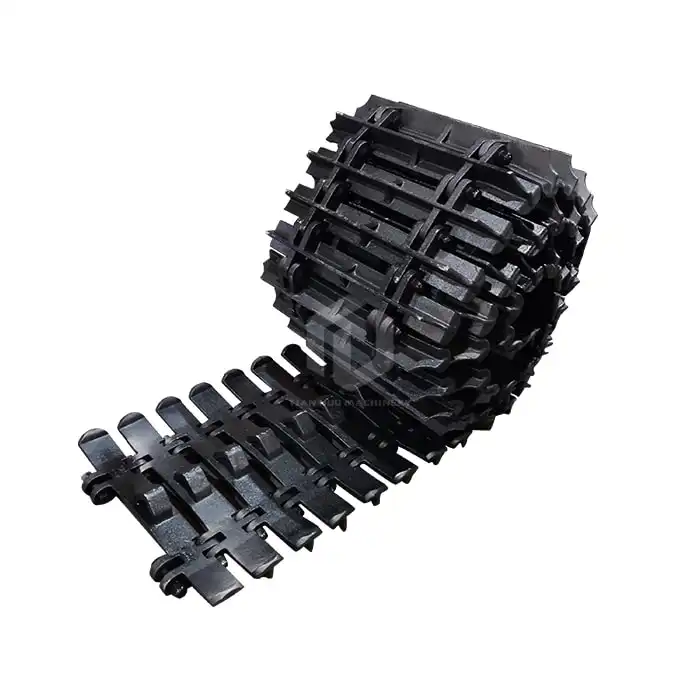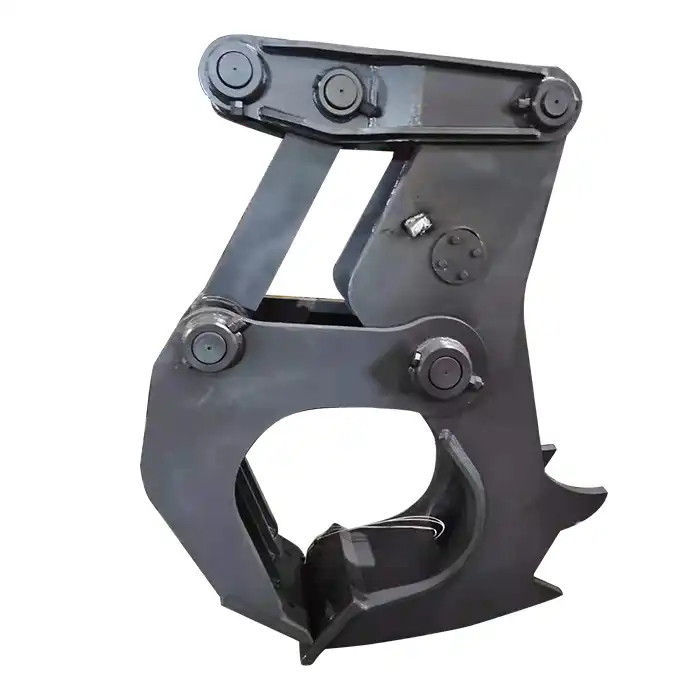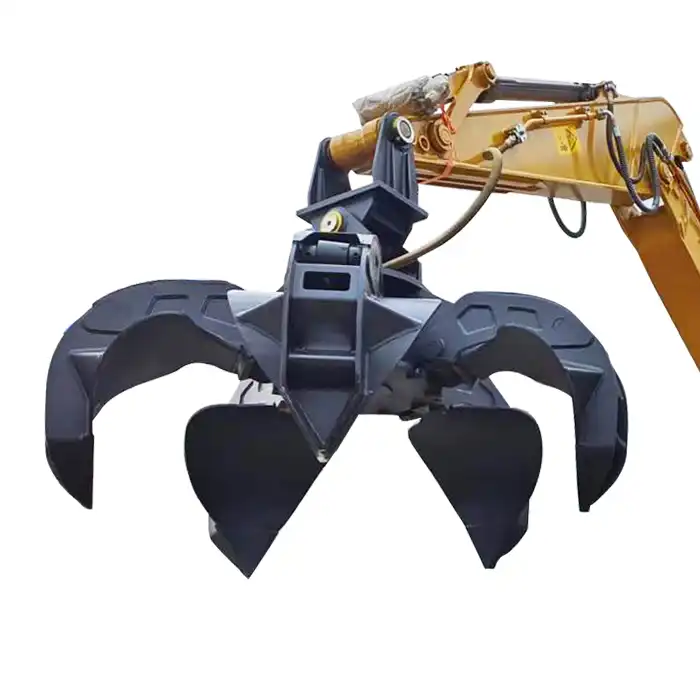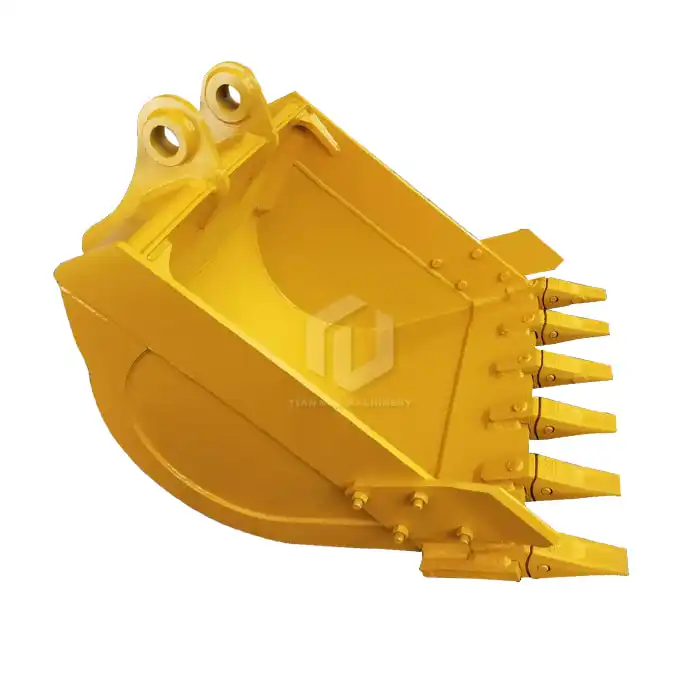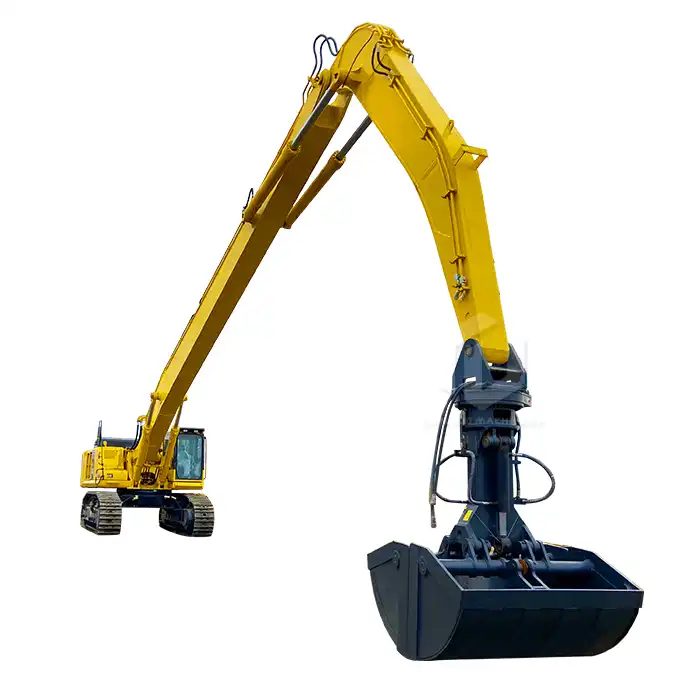What do grippers mean in excavators?
In the excavation and construction industry, an excavator gripper refers to a specialized attachment designed to grasp, hold, and manipulate various materials during excavation operations. These attachments transform standard excavators into versatile material handling machines capable of precise gripping functions. The term encompasses several attachment varieties including hydraulic clamps, rock grabs, grapples, and multi-purpose grippers. These attachments feature opposing jaws or arms that close around objects through hydraulic pressure, enabling operators to securely grip logs, rocks, debris, pipes, and other materials. Modern grippers typically incorporate rotation capabilities and advanced hydraulic systems that provide controlled pressure to prevent damage to handled materials. Industries such as demolition, forestry, recycling, railway construction, and general construction rely on these attachments to enhance productivity, improve safety by reducing manual handling, and expand the functional capabilities of standard excavation equipment. The selection of the appropriate gripper depends on specific application requirements, material properties, and the excavator's hydraulic capacity.
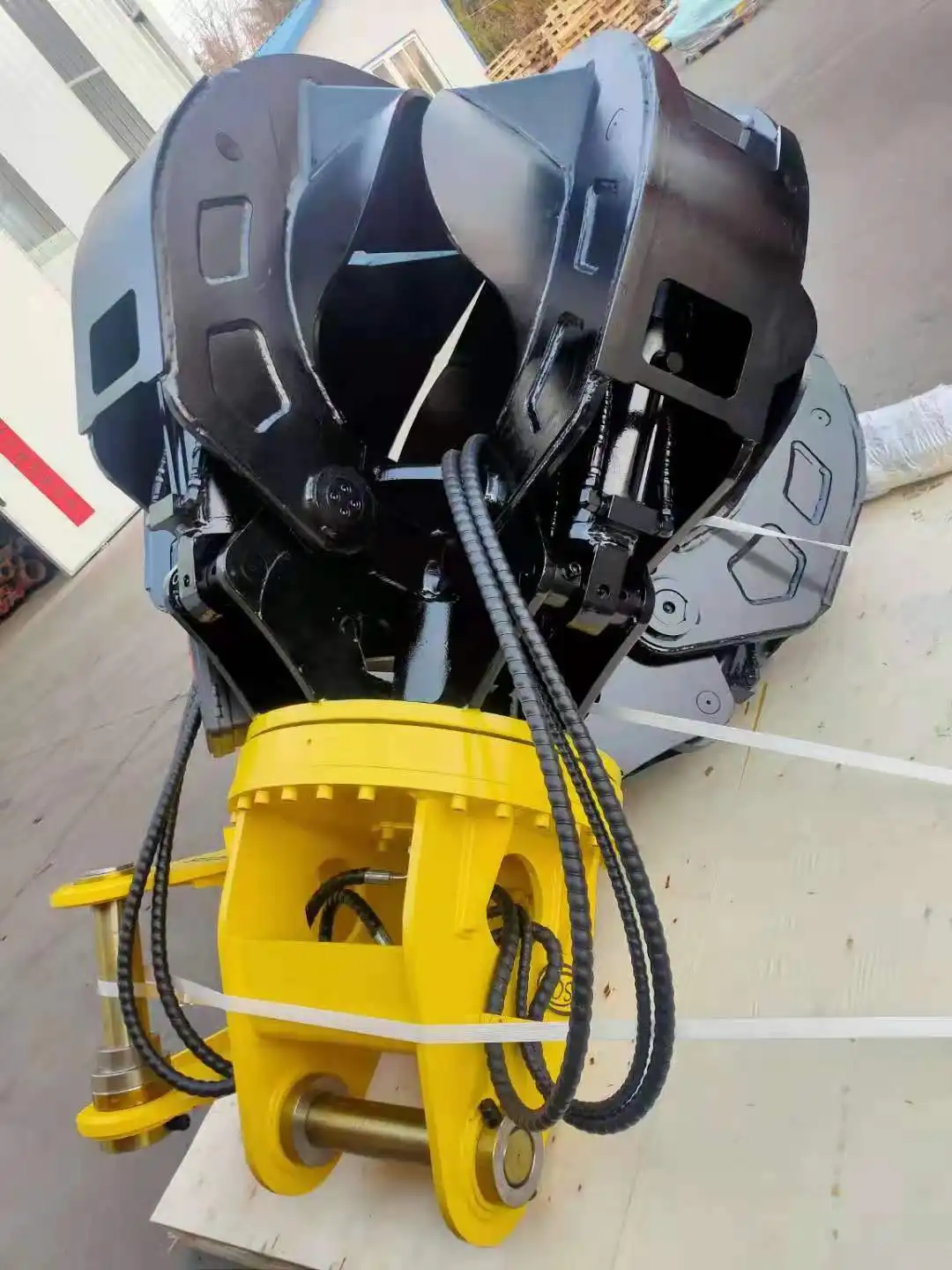
Structure And Working Principle

Basic Component Configuration
The excavator gripper consists of several essential components working in harmony to achieve effective material handling capabilities. At its core, every gripper features opposing jaws or arms manufactured from high-strength, wear-resistant steel alloys capable of withstanding extreme pressure and abrasive materials. These jaws are typically reinforced with replaceable wear plates or hardened inserts at critical contact points to extend service life while maintaining gripping efficiency.
The pivot mechanism forms another crucial component, allowing the jaws to open and close with precision. This mechanism incorporates heavy-duty bushings and hardened pins designed to absorb substantial lateral forces while maintaining alignment throughout the gripping cycle. Most contemporary grippers also feature a rotation system—either continuous 360-degree rotation or limited-angle rotation—enabling operators to position materials without repositioning the entire excavator.
Hydraulic cylinders provide the primary force behind the gripper's operation, transforming hydraulic pressure into mechanical force. These cylinders are strategically positioned to maximize closing force while maintaining a compact profile. Advanced models incorporate cylinder protection features such as enclosed design or guard plates to prevent damage from falling debris or during operation in confined spaces.
Hydraulic System Integration
Integration with the excavator's hydraulic system represents a critical aspect of gripper functionality. Most excavator grippers require dedicated auxiliary hydraulic circuits to power both the gripping action and rotation functions. These circuits typically operate at pressures between 3,000-5,000 PSI, depending on the application and gripper design. Flow requirements generally range from 10-30 gallons per minute, with larger grippers demanding greater flow to ensure responsive operation.
Pressure relief valves serve an essential role in the hydraulic system, preventing over-pressurization that could damage both the gripper and materials being handled. These valves automatically release pressure when it exceeds predetermined thresholds, providing protection during operation. Similarly, load-holding valves maintain pressure within the cylinders even if hydraulic hoses rupture or the pump stops functioning, ensuring that materials remain securely gripped during an emergency.
Operational Mechanics
Understanding the operational mechanics of excavator grippers reveals the sophisticated engineering behind these seemingly straightforward attachments. The gripping cycle begins when the operator directs hydraulic pressure to the closing side of the gripper cylinders. As pressure builds, the cylinders extend, forcing the jaws to close around the target material. The gripper's geometry plays a crucial role in this process, with jaw designs optimized for specific materials—wider, curved jaws for logs and vegetation, aggressive toothed designs for demolition debris, or smooth, flat surfaces for handling pipes or finished materials.
The mechanical advantage built into gripper designs allows these attachments to generate tremendous gripping force from relatively modest hydraulic pressure. This force multiplication occurs through strategic cylinder placement and optimized lever arrangements within the gripper structure. Typical gripping forces range from several thousand pounds for compact models to over 100,000 pounds for heavy-duty applications such as quarry operations or large-scale demolition projects.
When releasing materials, the operator redirects hydraulic flow to the opening side of the cylinders, retracting them and spreading the jaws. This action requires less force than closing, allowing for quicker cycle times during repetitive operations. The entire gripping cycle—from fully open to closed and back to open—typically takes 3-5 seconds, though this varies based on the hydraulic system's capacity and the specific gripper design.
Rock Grab
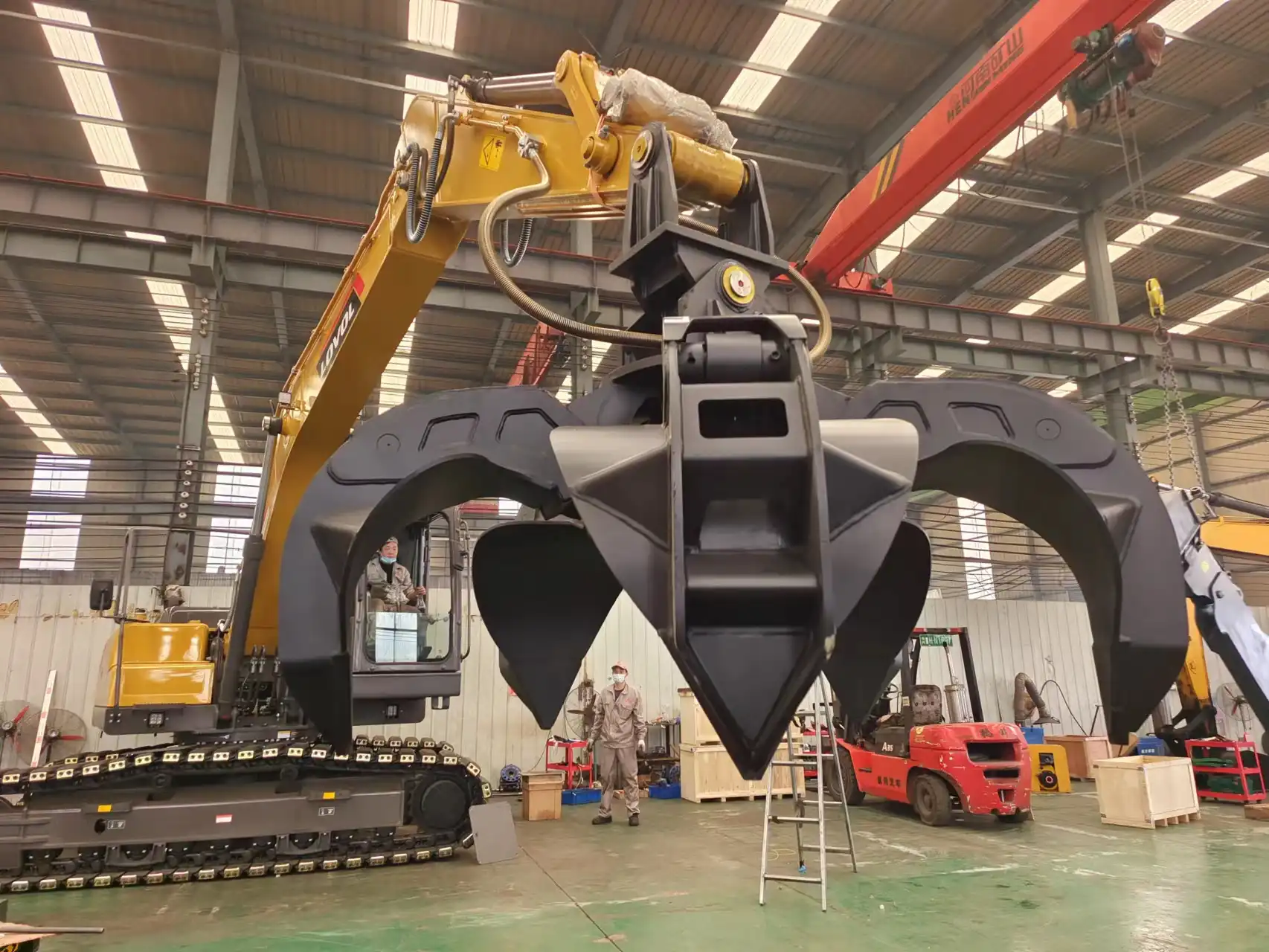
Design Specifications
Rock grabs represent specialized excavator gripper variants engineered specifically for handling boulders, concrete sections, and other dense materials encountered in quarrying, demolition, and heavy construction applications. These attachments feature distinctive design elements that set them apart from general-purpose grippers, beginning with their reinforced structural components. The frame typically incorporates extra bracing and thicker steel profiles—often utilizing high-tensile steel with yield strengths exceeding 100,000 PSI—to withstand extreme forces without deformation.
The jaw configuration on rock grabs exhibits aggressive profiles with penetrating teeth or ribs designed to establish secure contact with irregular stone surfaces. These teeth are typically fabricated from abrasion-resistant materials such as AR500 steel or feature replaceable tips made from tungsten carbide for extended service life in highly abrasive environments. The jaw geometry incorporates specialized curves and angles calculated to maintain grip on rounded objects while accommodating various material shapes and sizes.
Hydraulic components in rock grabs are upsized relative to standard grippers, with larger cylinder bores providing enhanced closing force necessary for securing heavy stone materials. These cylinders often feature reinforced rod seals and dust wipers specifically designed to withstand contamination from stone dust and debris. Protection systems including steel guards and armored hose routings shield vulnerable components from damage during intensive quarry or demolition operations.
Application In Quarrying
In quarrying operations, rock grabs transform excavators into efficient stone handling machines crucial for productivity in extraction processes. These specialized grippers excel in primary handling tasks following blasting or mechanical breaking, allowing operators to selectively retrieve appropriately sized stones for processing while separating oversized boulders for secondary breaking. This selective capability significantly reduces downstream processing requirements and improves throughput at crushing stations.
Rock grab applications extend beyond simple material transport to include precise placement tasks such as constructing gabion walls or rip-rap erosion barriers. The controlled rotation capabilities allow operators to position individual stones with surprising precision, achieving interlocking placements that enhance structural stability. In dimension stone quarrying, specialized grippers with rubber-lined or smooth jaws handle finished or semi-finished stone products without marring polished surfaces.
The productivity impact of properly specified rock grabs can be substantial, with handling rates typically improving by 40-60% compared to conventional bucket operations. This efficiency derives from eliminated double-handling steps and reduced cycle times between extraction and loading operations. Additionally, the reduced material spillage during transport translates to cleaner quarry floors, minimizing equipment damage from loose stone and improving site safety conditions.
Hydraulic Clamp

Technical Characteristics
Hydraulic clamps constitute a distinct excavator gripper category characterized by precision control and specialized gripping surfaces. Unlike aggressive rock grabs, these attachments prioritize controlled handling through sophisticated hydraulic systems that typically incorporate pressure-limiting valves allowing operators to adjust maximum gripping force based on material fragility. This adjustability enables a single attachment to handle diverse materials from robust concrete pipe sections to more delicate finished products.
The clamping mechanism typically features flat or contoured gripping surfaces with replaceable rubber or polyurethane pads that increase friction while preventing surface damage to handled materials. These pads vary in durometer (hardness) ratings from 60A for maximum conformability to 90A for applications requiring minimal compression under load. The gripper geometry incorporates parallel closing action that maintains consistent pressure distribution across the entire gripping surface, eliminating concentration points that could damage materials.
Motion control systems represent another distinguishing feature, with hydraulic dampening at both ends of cylinder travel preventing sudden jaw movements that could dislodge materials. Advanced models incorporate position sensors connected to the excavator's control system, providing operators with real-time feedback on jaw position and gripping pressure. This technology enables precise object placement with tolerances as tight as 10-15mm at full reach—a capability particularly valuable in pipe laying and precast concrete installation applications.
Pipe Handling Applications
The utility construction sector extensively employs hydraulic clamps for pipe installation tasks ranging from water and sewer infrastructure to gas distribution networks. These specialized grippers safely handle various pipe materials including concrete, ductile iron, steel, and plastic with diameters typically ranging from 200mm to over 3000mm. The attachment's design ensures even pressure distribution, preventing pipe deformation while maintaining secure handling during placement operations.
Safety advantages become particularly evident in trench installation scenarios, where hydraulic clamps eliminate the need for workers to enter excavations for pipe positioning. This capability directly addresses confined space entry risks that historically represented a significant hazard in utility construction. The precise control offered by these attachments allows operators to achieve exact grade and alignment requirements during installation, improving joint quality and reducing potential leak points in completed systems.
Productivity gains from hydraulic clamp implementation typically range from 30-50% compared to traditional chain-and-hook pipe handling methods. These efficiency improvements derive from reduced cycle times between pipe staging and placement, elimination of multiple rigging steps, and decreased dependency on ground personnel for alignment guidance. Additional benefits include reduced pipe damage rates and associated warranty claims—a significant consideration when handling expensive materials such as large-diameter ductile iron pressure pipe with specialty coatings.
FAQ

1. What hydraulic requirements must my excavator meet to operate a gripper attachment?
Most standard excavator grippers require an auxiliary hydraulic circuit capable of delivering 20-30 gallons per minute at operating pressures between 3,000-4,500 PSI. This circuit powers both the gripping action and rotation functions.
2 . How do I choose between different gripper types for my specific application?
Selecting the appropriate gripper type depends on material characteristics, required precision, and operating environment. Rock grabs with aggressive tooth profiles excel in quarrying and demolition where maximum penetration and holding power are paramount. Hydraulic clamps with smooth or rubber-lined jaws prove ideal for handling finished products, pipes, or precast components where surface protection is essential. For vegetation handling in forestry or land clearing, specialized grapples with long, curved tines allow maximum material volume while permitting soil and debris to sift through.
3. Can grippers be used underwater or in marine applications?
Specialized marine versions of excavator grippers are available for underwater operations in dredging, shoreline construction, and submarine pipe installation. These variants incorporate additional sealing on all hydraulic components, stainless steel fasteners resistant to corrosion, and specialized water-resistant lubricants. Electric components such as sensors and rotation motors receive additional waterproofing treatment and pressure compensation systems that equalize internal and external pressures at depth. Marine grippers typically command price premiums of 30-50% over standard versions due to these specialized features. When using these attachments in saltwater environments, implement rigorous freshwater rinsing procedures after each shift to minimize corrosion. Despite these protective measures, expect accelerated wear rates in underwater applications, particularly on moving components and hydraulic seals.
Excavator Gripper Supplier
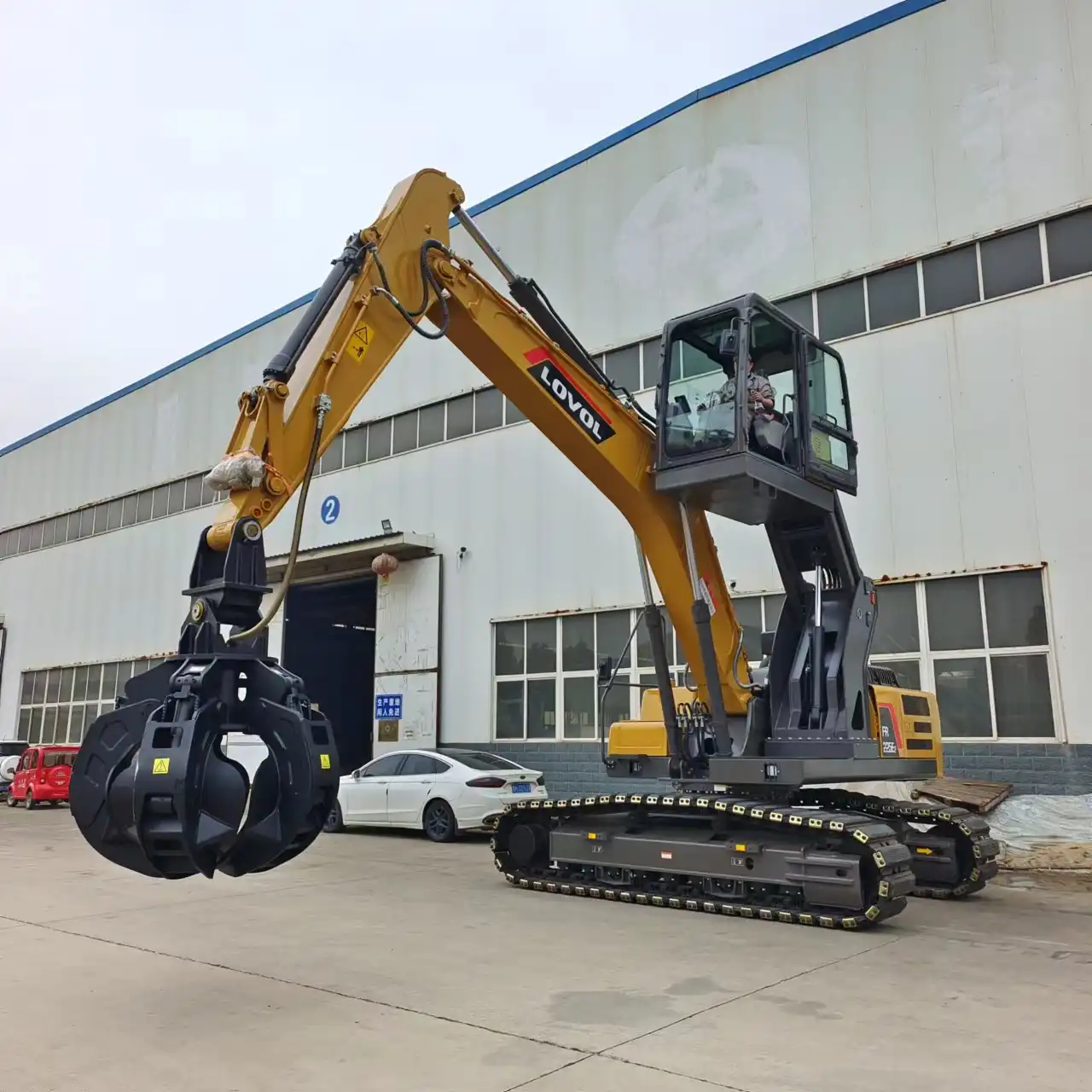
Ready to elevate your excavation efficiency with unparalleled precision? Tiannuo Machinery's excavator gripper is engineered for the toughest tasks. With a high-strength steel clamp body ensuring durability, adjustable clamp teeth for versatile applications, and a powerful hydraulic oil-powered oil cylinder, our gripper is the ultimate tool for your projects. The seamless pipeline connection to the control valve guarantees smooth operation. Don't miss out on this game-changing equipment. Contact us now at arm@stnd-machinery.com, rich@stnd-machinery.com, or tn@stnd-machinery.com to revolutionize your excavation process.
References
Johnson, R. (2023). Advanced Hydraulic Attachments for Modern Excavation Equipment. Construction Technology Review.
Zhang, L. & Peterson, T. (2022). Material Handling Efficiency in Quarry Operations: Equipment Selection and Application. International Journal of Mining Engineering.
Construction Equipment Manufacturers Association. (2023). Technical Standards for Hydraulic Attachments on Excavation Equipment.
Williams, S. (2023). Maintenance Protocols for Heavy Construction Attachments in Abrasive Environments. Equipment Maintenance Quarterly.
Nakamura, H. (2022). Evolution of Precision Gripping Technology in Construction Applications. Journal of Construction Innovation.
Martinez, D. & Thompson, K. (2023). Safety Advancements Through Mechanized Material Handling in Infrastructure Construction. Occupational Safety in Construction Review.
About Author: Arm
Arm is a leading expert in the field of specialized construction and railway maintenance equipment, working at Tiannuo Company.


